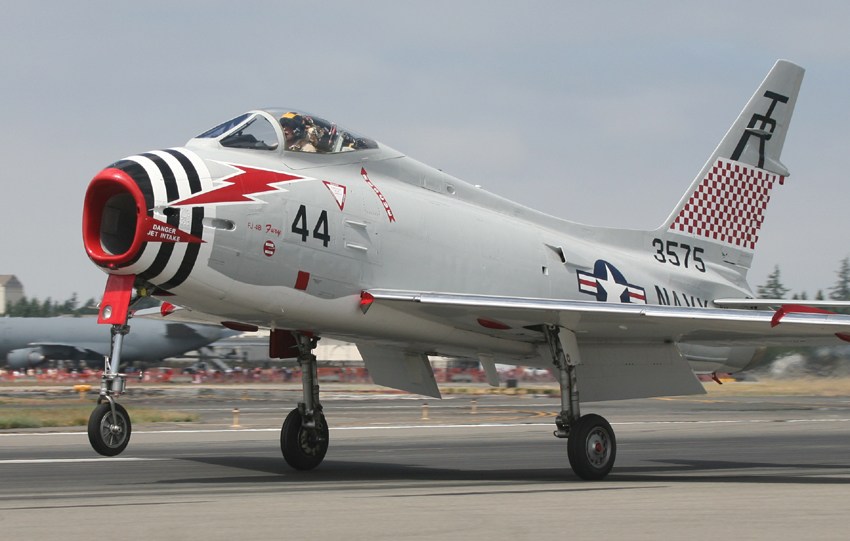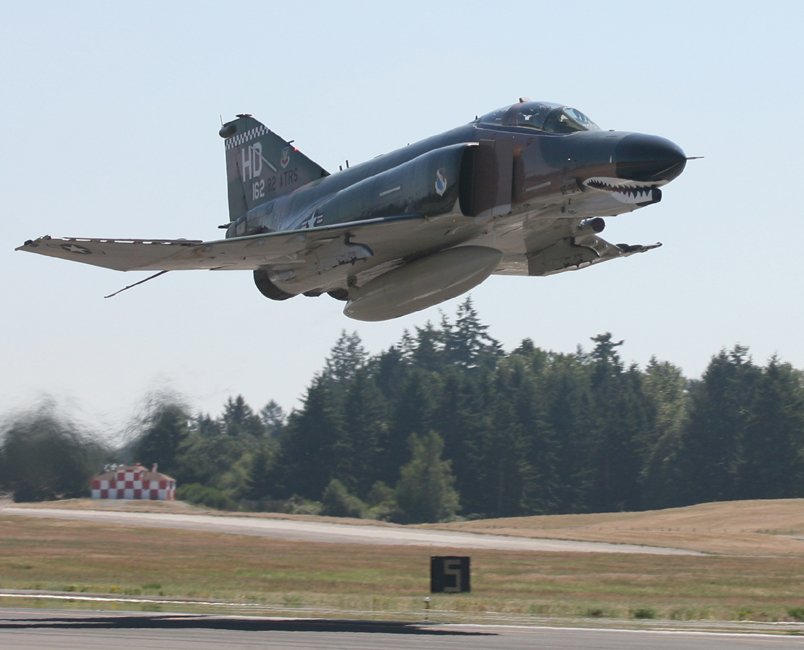Highlights of the 2010 McChord AFB Airshow

This was my first visit to the airshow at McChord Air Force Base near Seattle, and of course I was worried about the weather because of Seattle's reputation for copious amounts of rain. Sure enough, as I flew in from sunny San Diego a solid blanket of cloud appeared about 50 miles south of Seattle. Fortunately we didn't get any rain, but the thick cloud ceiling at 1000 feet turned everything grey and forced the cancellation of a display by the new Boeing 787 Dreamliner, which was scheduled to do a flyby or two on its way to the Paris Air Show. The cloud was the typical "marine layer" condensation which occurs all along the Pacific coast of the United States. The heat of the day caused it to burn off by about midday, so the show organizers delayed the schedule to let most of the flying happen under sunny skies. Alas, the UH-1 Iroquois (better known as a "Huey") did all of its flying while the cloud was still around. |
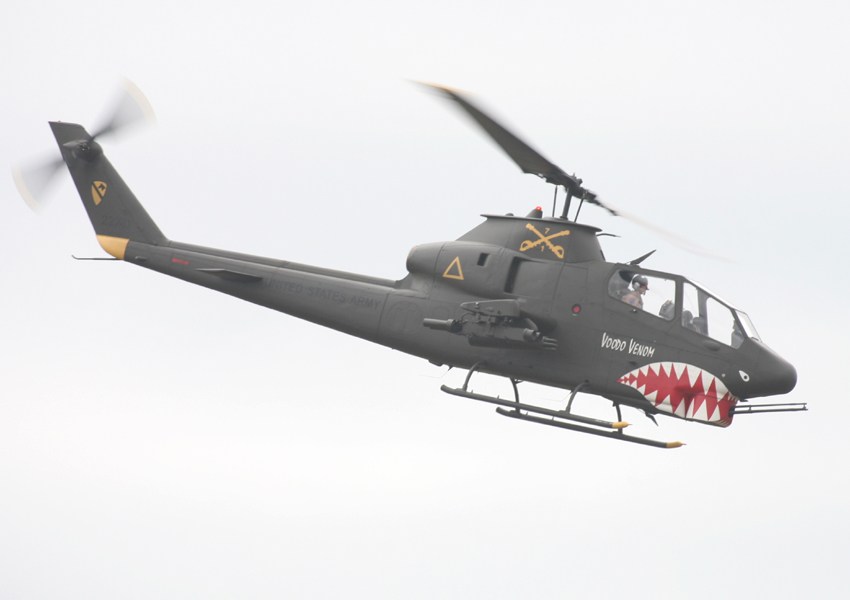
The Huey made many passes up and down the crowdline accompanied by this AH-1 Cobra. The Cobra was a development of the Iroquois, which is why it's sometimes referred to as the "Huey Cobra". In Vietnam many UH-1 Iroquois helicopters were fitted as gunships called Hogs with machine guns and rockets until a better solution was developed. The Cobra was better armed and armoured than the Hogs, and was smaller and lighter, making it a smaller target while allowing it to carrying a heavier load at greater speeds. The Cobra's combat service in Vietnam proved that helicopter gunships could be very effective - a lesson the Russians took to heart with their Mi-24 "Hind", made famous during their war in Afghanistan. |
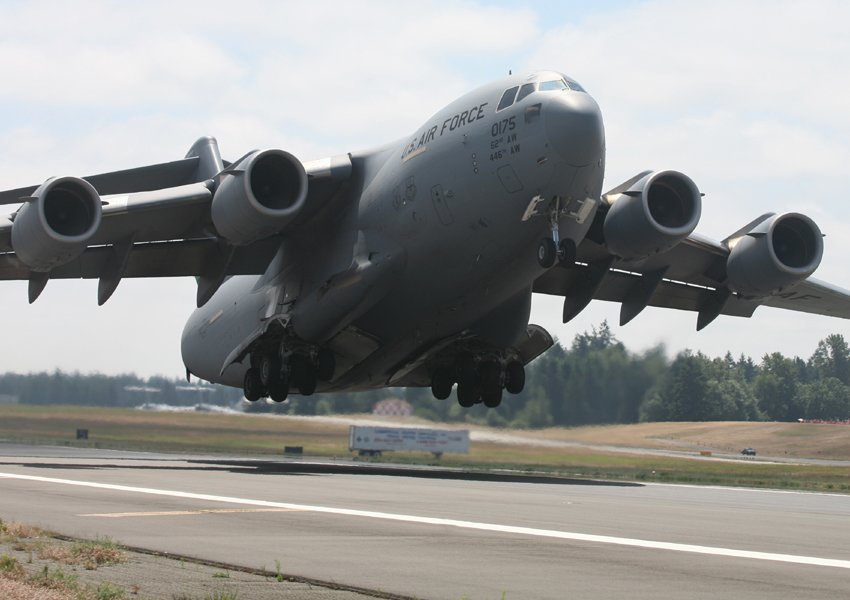
McChord is home to the 62nd Airlift Wing, which operates a large fleet of C-17 Globemaster IIIs as transport aircraft. Each day a few of these planes did a demonstration. Demonstrations by C-17s, mostly operating out of March Field in southern California have become surprisingly popular, because the Globemaster is amazingly agile, allowing it to do tight turns and passes right in front of the crowd, something you don't normally see a large plane doing. It can also do other impressive maneuvers, like a dramatic takeoff during the 2007 Riverside Airshow. |
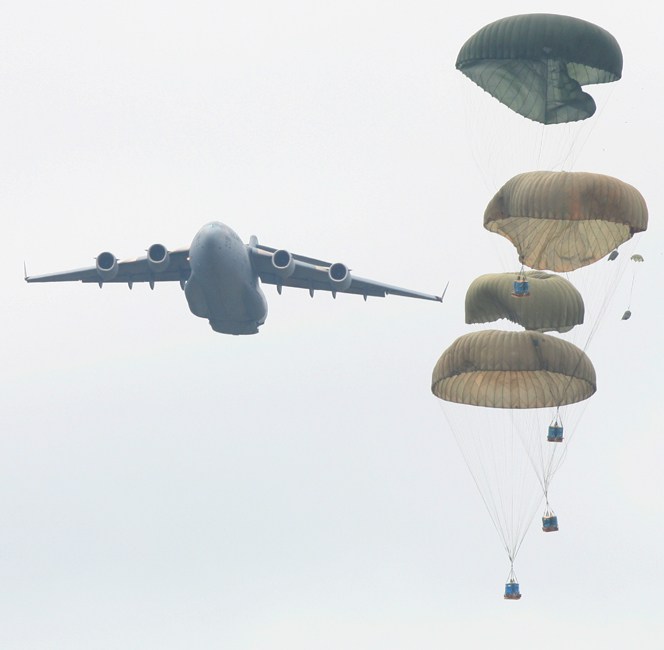
The McChord demonstration included all the usual tricks, but added drops by a pair of aircraft of both cargo and troops from Fort Lewis army base right next door. In fact, in February of 2010 the two bases were merged into Joint Base Lewis-McChord. It's such a shame that all of the drops happened while the thick, grey cloud was still around! |
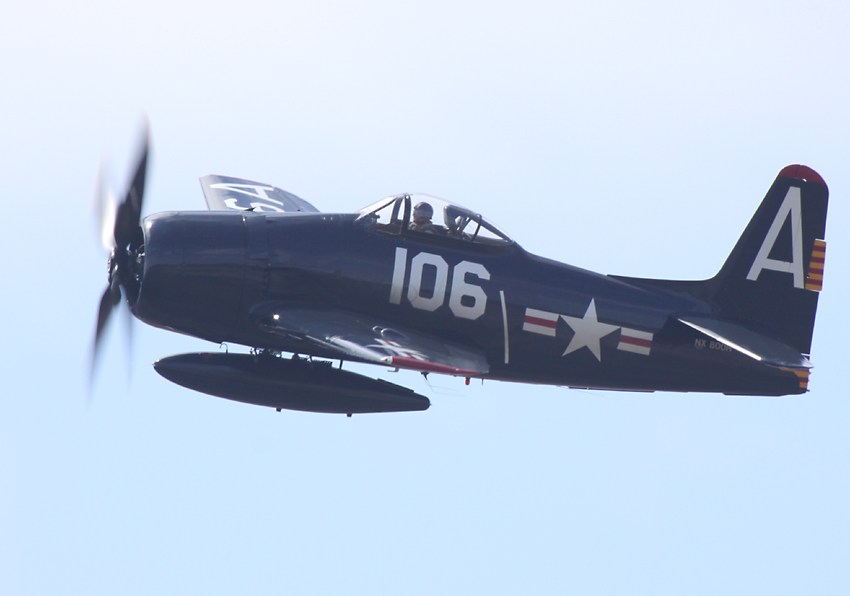
A bit of blue sky at last! McChord isn't a great show for people who get their kicks from world war two aircraft, but this navy F8F Bearcat fighter did fly, together with a P-51 Mustang, which was so far from the crowd that I couldn't get any good shots, even though I was much closer than other people. |
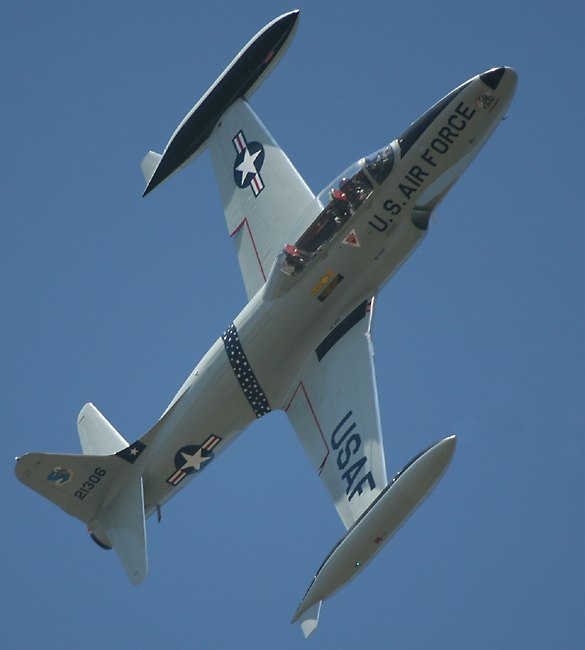
This show might not appeal to propeller heads, but it's heaven to those who like the roar of jet engines! It's a particularly good event for anyone interested in historic jet aircraft, like this T-33 Shooting Star, the training version of America's first effective jet fighter, the P-80, which shared the same name. To provide space for a second seat, the fuselage of the P-80 was stretched by three feet. Some versions retained two machine guns for training purposes, and a few smaller air forces did use them in combat. |
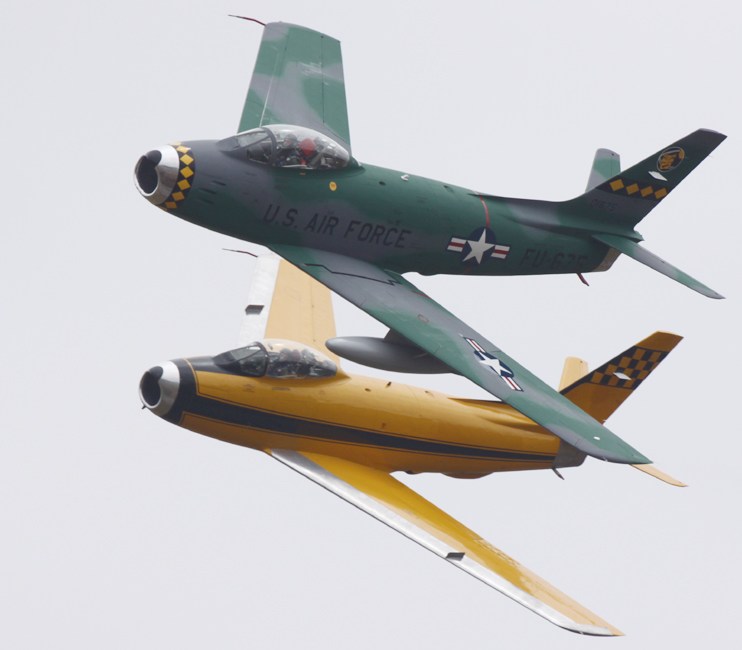
The advent of the Russian MiG-15 "Fagot" jet fighter during the Korean War severely curtailed the P-80's effectiveness, so the F-86 Sabre was hurried into service. It's not often that you get to see two Sabres flying together, in this case one in USAF colors and the other a Canadian Sabre which was originally operated by the German Air Force. The Canadian Sabre was repainted shortly after the show in Royal Canadian Air Force colors, which would have been nice to see (a German paint scheme would have been even cooler!). |

The USAF Sabre was flown by Dale "Snort" Snodgrass, who since retiring from flying F-14 Tomcats has become famous on the airshow circuit by banking F-86s and other planes at low level all over America! While the show organizers waited for the weather to clear, Snort gave us plenty of opportunity to admire his showmanship. |
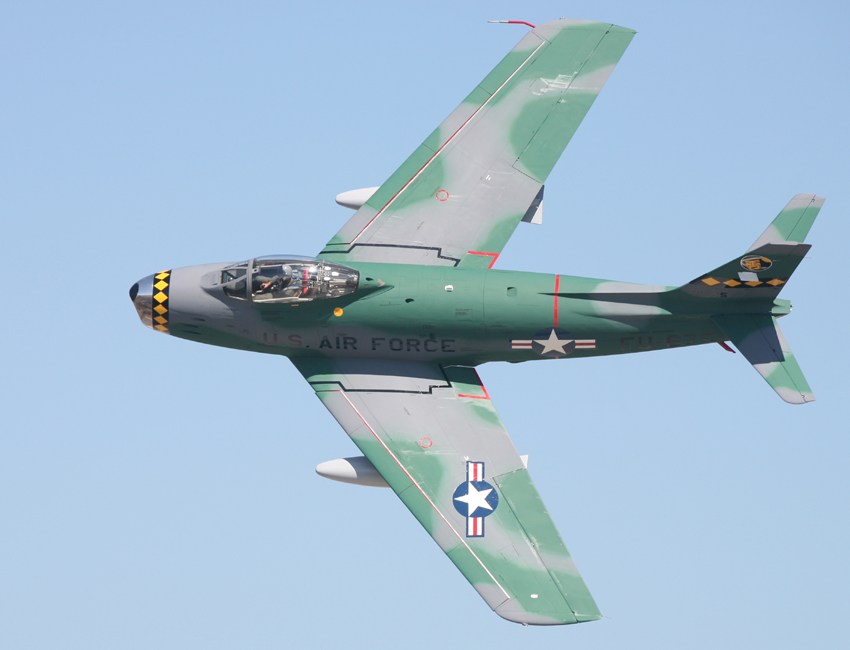
Just after midday the sun came out. I love the unusual paint scheme on this Sabre! Almost all F-86s came with a shiny aluminum finish, but this camouflage was used briefly in 1955. The advantages in combat of camouflage over a highly-reflective finish seem obvious, but for some reason it wasn't until much later that camouflage came back into vogue in the US Air Force. |
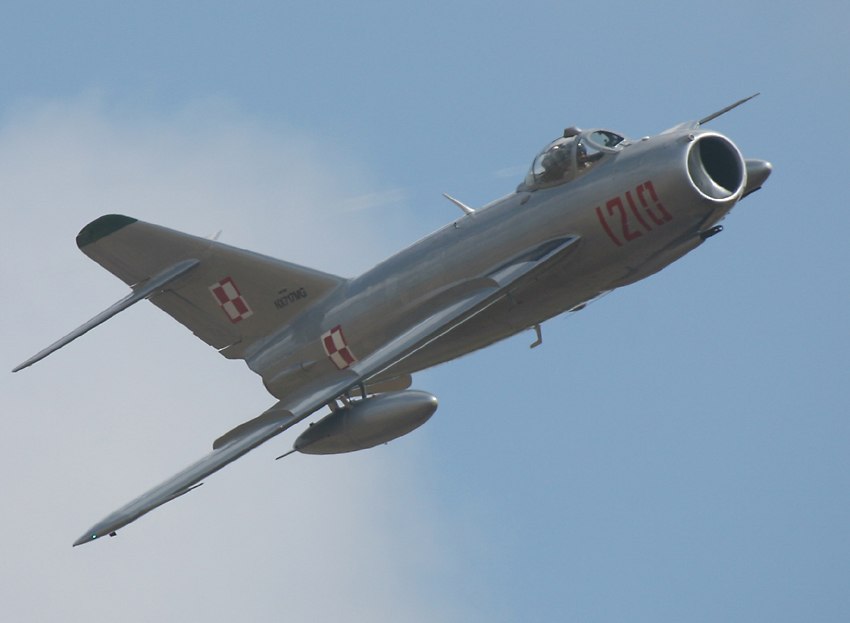
The Fury flew with a Russian-designed MiG-15 two-seat trainer and this MiG-17 fighter as part of the "MiG Fury" jet team, which is based in Idaho. The MiG-17 "Fresco" was a development of the MiG-15 fighters which battled Sabres during the Korean War. Later versions of the MiG-17 had afterburning engines, but they remained sub-sonic. The Fresco arrived too late for the Korean War, but they were used in Vietnam. Although theoretically obsolete, they shot down 71 American aircraft, including sophisticated supersonic fighters such as F-8 Crusaders, F-105 Thunderchiefs and F-4 Phantom IIs.
|
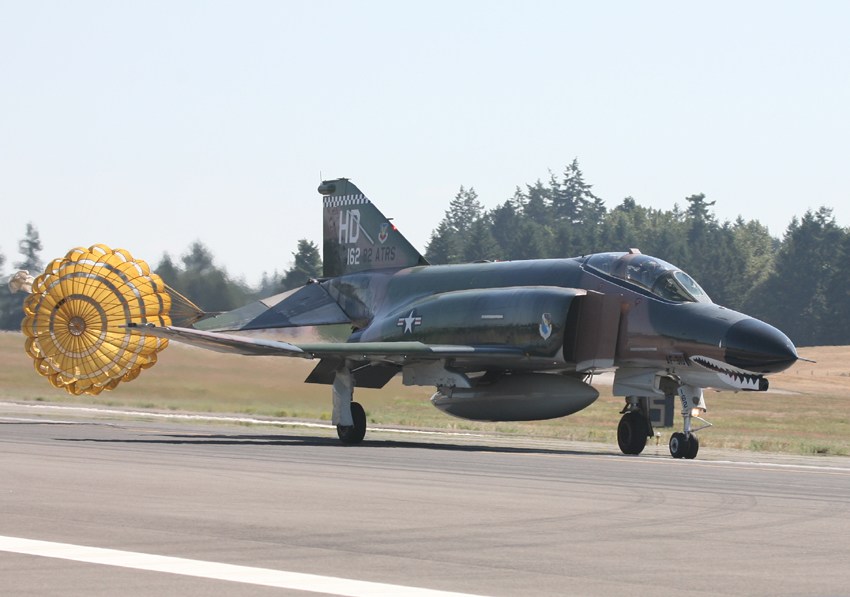
The Phantom was America's primary fighter aircraft during the Vietnam War, and it was one of very few fighters to ever serve with distinction both with the Air Force and Navy. It still has a huge number of fans, who have given their own names to the plane. Actually they've given their own names to virtually everything, calling themselves Phantom Phanatics, the pilots Phantom Phlyers and even the mechanics are Phantom Phixers. Some of the plane's nicknames include "Flying Brick", "Lead Sled", "Iron Pig" and "Double Ugly". Even the fans acknowledge the plane's faults - the wings and tail are bent at strange angles to overcome various design deficiencies, and it's said that the plane's ability to fly is only due to "the triumph of thrust over aerodynamics". |

As well as older planes, the McChord airshow is a great place to see modern military jets. The B-2 Spirit stealth bomber is arguably the most extraordinary aircraft in the world, with its bizarre shape and its extraordinary cost - it's literally worth its weight in gold! Perhaps partly because of the price tag, the Air Force isn't too eager to throw it around too aggressively, so mostly the public only gets to see the underside and profile views. However if you want to see the top and a variety of other views - including wheels-down and with bomb bay doors open, then you can check out the B-2 display at the 2005 Edwards AFB airshow. |
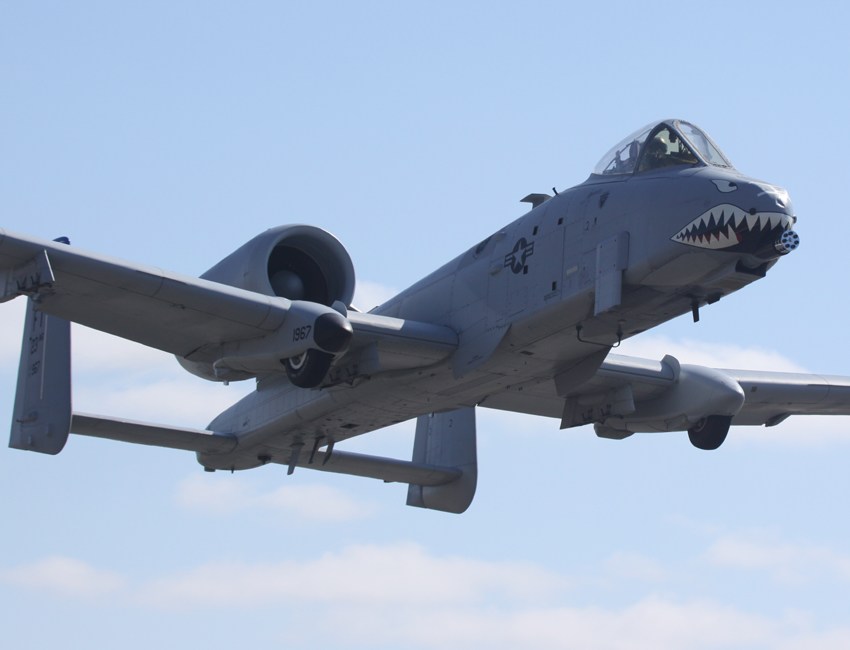
The B-2 was designed as a strategic bomber, its primary purpose to drop nuclear bombs on the Soviets and wipe out huge areas, all while the plane and its crew evade detection. This A-10's mission is also to drop bombs, but its technique couldn't be more different. The A-10 is the ultimate tactical weapon, designed for maneuverability so it can get right down into the thick of a battle, dropping up to 16,000 pounds of bombs or rockets. The thing which makes the A-10 unique is its awesome seven-barreled 30mm cannon, which fires at a rate of 50 to 70 rounds a second, each weighing about a pound. These shells can easily penetrate the armor of a tank, even from several thousand feet away. The recoil from this gun is greater than the thrust of the A-10's engines, so theoretically if fired for long enough then the plane would eventually come to a stop! In practice, the gun is only fired in bursts of one to two seconds, to conserve ammunition and prevent the barrel being damaged by overheating. |
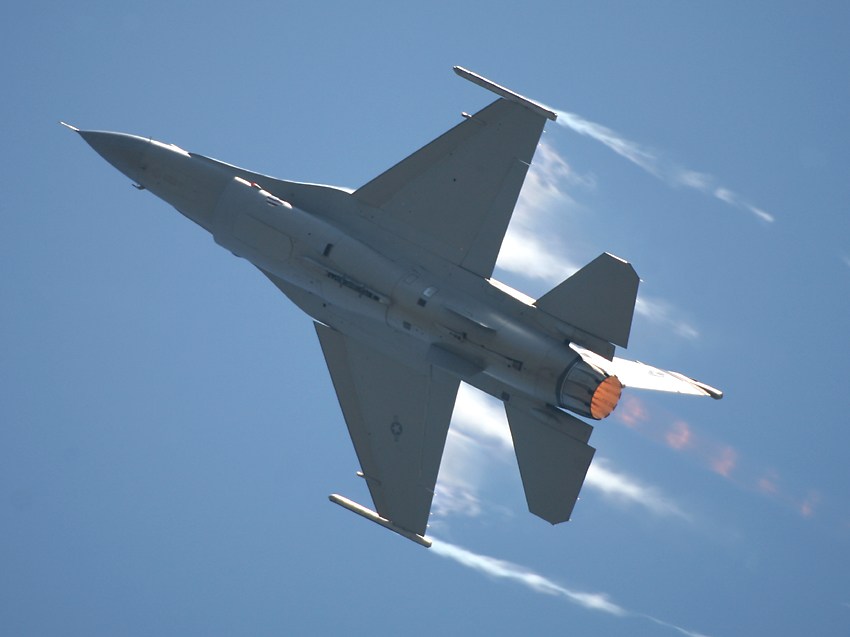
The F-16 Fighting Falcon is one of the mainstays of the Air Force's fighter force, with about 1280 in service. Nowadays there aren't too many enemy aircraft to shoot down, so its main role is to drop bombs. It can't get in as close as the A-10, so it drops its bombload from further away, often using precision munitions guided by GPS or other means. |
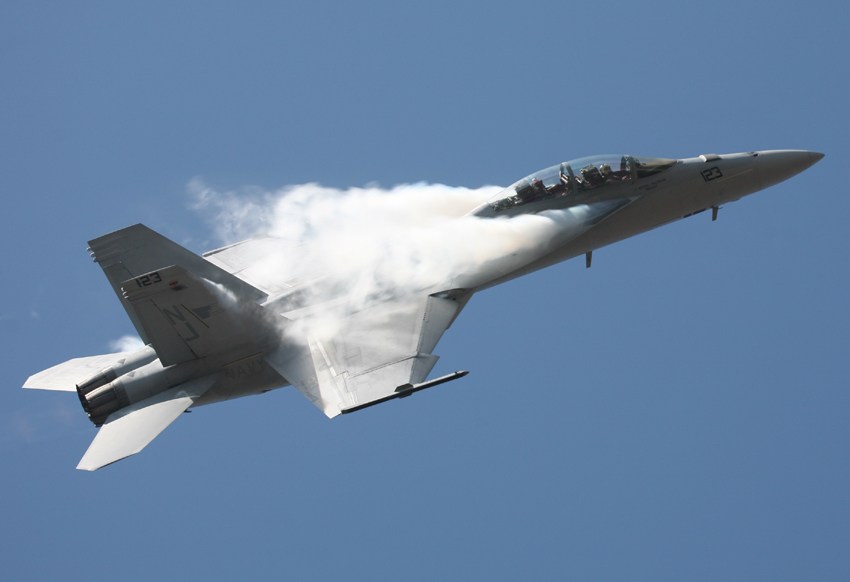
McChord is an Air Force Base, but they were good enough to allow the Navy to strut their stuff, too! Here, an F-18F Super Hornet shows why its such a favorite aircraft of vapor afficianados. The only plane in the American inventory which seems more prone to generating vapor is the F-22 Raptor, which sometimes disappears within a cloud of its own making. |
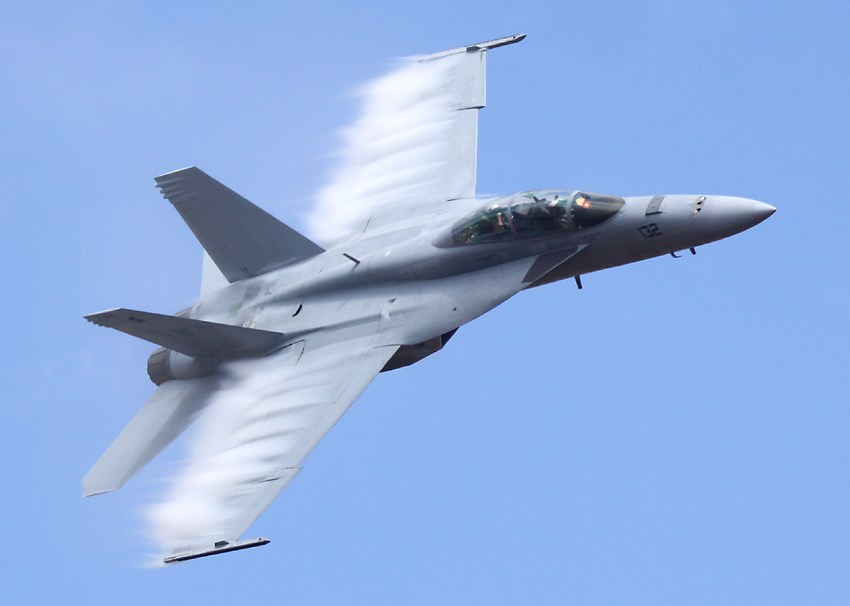
The Super Hornet is a larger version of the original F-18 "legacy" Hornet, which entered service in 1983. Many different military aircraft types have been retired over the last ten years, and in the case of the navy this has meant that the Hornet and Super Hornet have taken over the roles of these other aircraft. Hornets operate not only as fighters, but also in the ground attack and reconnaisance roles and as "buddy refueling" tankers. The E-18G Growler is currently in development as an electronic warfare version of the Hornet, to replace the EA-6 Prowler. |
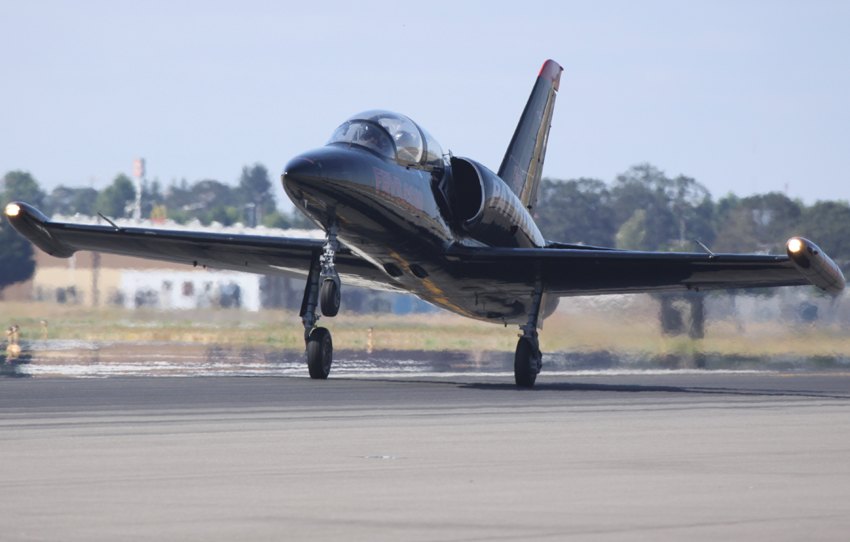
The Patriots are America's best civilian jet display team, regularly performing at shows up and down the west coast. The name is a bit of a joke, considering that they fly four Soviet jet trainers, but no-one can deny that their Aerovochody L-39 Albatrosses are attractive planes, with some very nice curves. |
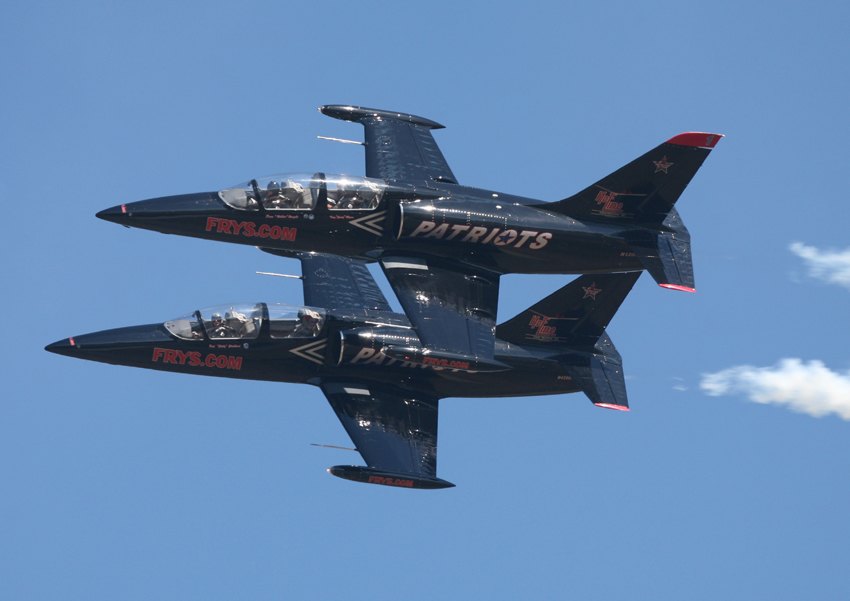
As well as having good-looking aircraft, The Patriots put on a first rate performance, highlighted by multi-colored smoke (in red, white and blue, of course!). Their formations are very tight, and they even do some cool tricks like tail slides which the military jet teams like the Thunderbirds and the Blue Angels don't do. |
